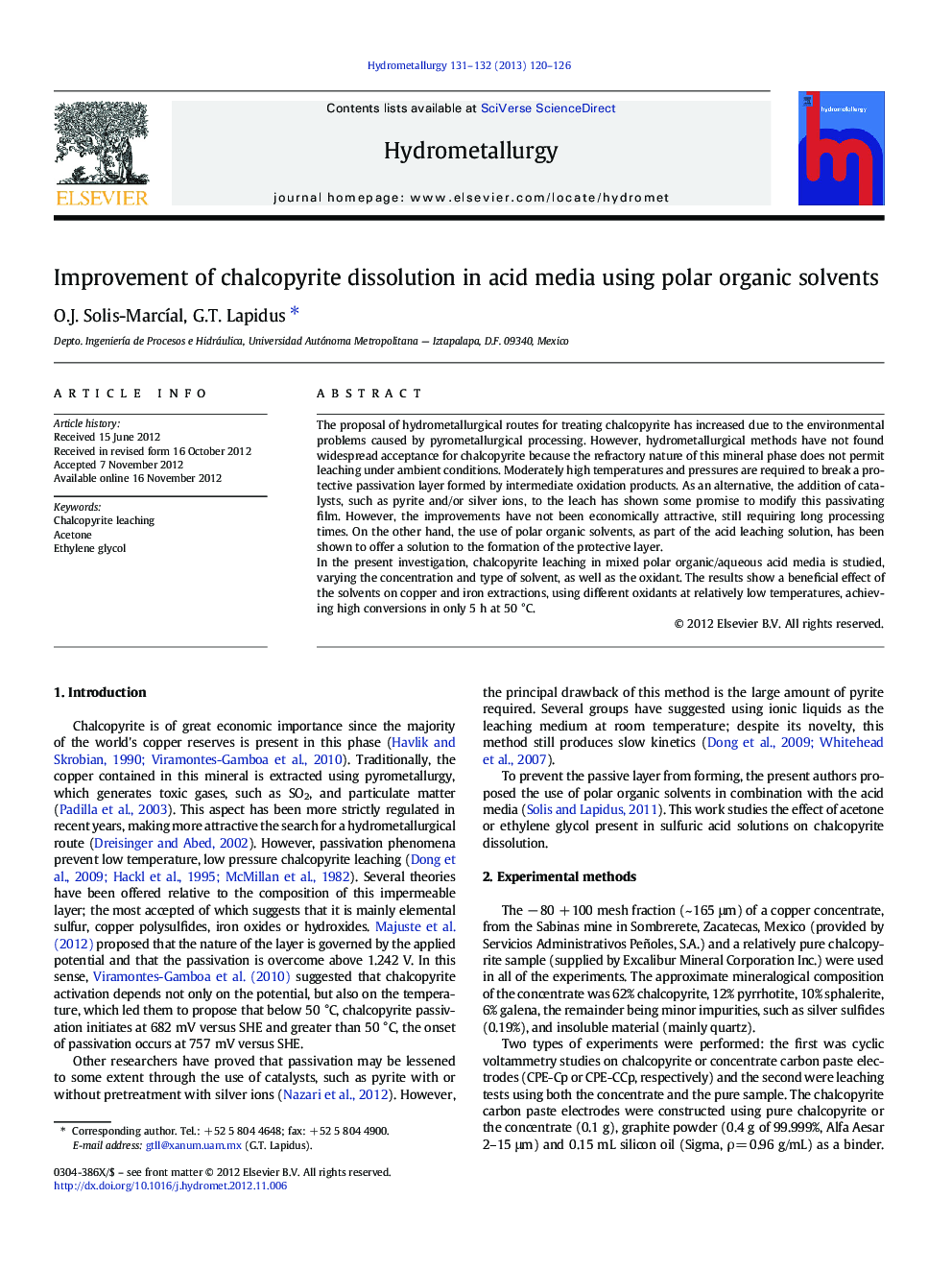| Article ID | Journal | Published Year | Pages | File Type |
|---|---|---|---|---|
| 212448 | Hydrometallurgy | 2013 | 7 Pages |
The proposal of hydrometallurgical routes for treating chalcopyrite has increased due to the environmental problems caused by pyrometallurgical processing. However, hydrometallurgical methods have not found widespread acceptance for chalcopyrite because the refractory nature of this mineral phase does not permit leaching under ambient conditions. Moderately high temperatures and pressures are required to break a protective passivation layer formed by intermediate oxidation products. As an alternative, the addition of catalysts, such as pyrite and/or silver ions, to the leach has shown some promise to modify this passivating film. However, the improvements have not been economically attractive, still requiring long processing times. On the other hand, the use of polar organic solvents, as part of the acid leaching solution, has been shown to offer a solution to the formation of the protective layer.In the present investigation, chalcopyrite leaching in mixed polar organic/aqueous acid media is studied, varying the concentration and type of solvent, as well as the oxidant. The results show a beneficial effect of the solvents on copper and iron extractions, using different oxidants at relatively low temperatures, achieving high conversions in only 5 h at 50 °C.
► The use of organic solvents was shown to favor the oxidative leaching of chalcopyrite. ► The acetone and ethylene glycol obtained high copper extractions in a short time. ► The copper might be stable as the cuprous ion in these media.
